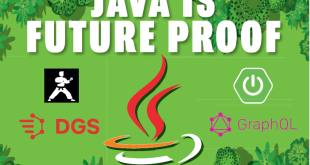In this article, we explore how to integrate OpenAI API with Quarkus. We will create a Quarkus application using the new REST Client Reactive to invoke the OpenAI DALL.E API for images generation. OpenAI API Overview Before jumping into the code, let’s explore the OpenAI Create Image API and how it works. Create Image Request The body request is made …
Read More »Blog Layout
Testing and Local Development Made Simpler with Testcontainers Desktop App
Being able to release new features quickly is a must-have capability in today’s competitive world. In order to release your software quickly and often you should have CI/CD infrastructure that can automatically build, test, and release our software with minimal to no human intervention. A comprehensive automated test suite is the key to release your software with confidence. Testcontainers libraries …
Read More »Is OpenJDK Just a Drop-In Replacement?
I don’t know anyone who is still using the Oracle JDK. It has been my recommendation for quite a while to just switch to an OpenJDK distribution as they are roughly drop-in replacements for Oracle’s official JDK. I’ve repeated that advice quite frequently but I guess I glossed over a lot of details that might be insignificant for hackers but …
Read More »Taming the Bias: Unbiased Safepoint-Based Stack Walking
Walking only at safepoints has advantages. The main one is that you aren’t walking the stack in a signal handler but synchronously to the executed program. Therefore you can allocate memory, acquire locks and rematerialize virtual thread / Loom frames. The latter is significant because virtual threads are the new Java feature that cannot support using signal-handler-based APIs like AsyncGetCallTrace. …
Read More »Thread-Safe Counter in Java: A Comprehensive Guide
In this tutorial, we will explore the concept of thread safety in Java, specifically focusing on a simple counter. We will start by understanding why a basic counter is not safe for multiple threads; then, we will progressively enhance its thread safety using different techniques such as synchronization, locks, Unsafe, VarHandle, and finally, AtomicInteger. We will be referencing the code …
Read More »6 Considerations when Building High-Performance Java Microservices with EDA
Event-Driven Architecture (EDA) is a design principle focused on the creation, detection, and reaction to events. Renowned for its resilience and low latency, EDA is a reliable choice for developing robust, high-performing microservices. Moreover, this method can be helpful in improving productivity and making the process of cloud migration smoother. In this article we will outline 6 key considerations and …
Read More »Java Magazine #1 2023: Java is future proof
We sloten vorig jaar af met een knaller: J-Fall 2022. Maar dit jaar wordt het nog een groter spektakel… Want dit jaar vieren we maar liefst de 20ste editie! Daarbij staan er nog heel veel andere leuke zaken in de stijgers dit jaar, daar krijg je via onze nieuwsbrieven binnenkort meer over te horen. Maar niet alleen wij zijn bezig …
Read More »Java Magazine #4 2022: J-Fall is here
Dit vind je o.a. allemaal in deze editie van Java Magazine. Ondertussen is Java 19 tot je beschikking. Benieuwd wat er allemaal nieuw is? Blader dan door naar pagina 6. Natuurlijk hebben we nog veel meer interessante artikelen. Duik bijvoorbeeld in de wereld van algoritmes of verdiep je in property-based testing. Zorg dat je je beveiliging in orde hebt aan …
Read More »Pitest: Do You Test Your Tests?
What is Pitest? Pitest is a library that helps us do mutation testing. Mutation testing is a process in which random variations of the code under test are generated. Hence, our tests will run against variants of the code that we’re intending to test. If the test fails, the mutation is killed, if it still passes it lives. So in …
Read More »My Final Take on Gradle (vs. Maven)
I tweet technical content that I consider interesting, but the funny tweets are the ones that get the most engagement. I attended the JavaLand conference in March, stumbled upon the Gradle booth, and found this gem: Of course, at some point, a fanboy hijacked the thread and claimed the so-called superiority of Gradle. In this post, I’d like to shed …
Read More » NLJUG – Nederlandse Java User Group NLJUG – de Nederlandse Java User Group – is opgericht in 2003. De NLJUG verenigt software ontwikkelaars, architecten, ICT managers, studenten, new media developers en haar businesspartners met algemene interesse in alle aspecten van Java Technology.
NLJUG – Nederlandse Java User Group NLJUG – de Nederlandse Java User Group – is opgericht in 2003. De NLJUG verenigt software ontwikkelaars, architecten, ICT managers, studenten, new media developers en haar businesspartners met algemene interesse in alle aspecten van Java Technology.

